If you're in the market for a 4WD upgrade or have just bought your first caravan, you’re likely looking to include an auxiliary power system for your off-grid setup.
Creating an effective auxiliary power system is more than just adding batteries, however. You need to consider some additional important factors before purchasing components for your system.
When designing your auxiliary power system, you need to determine two things:
- What appliances you intent to use, and
- The power requirements and voltage for those appliances
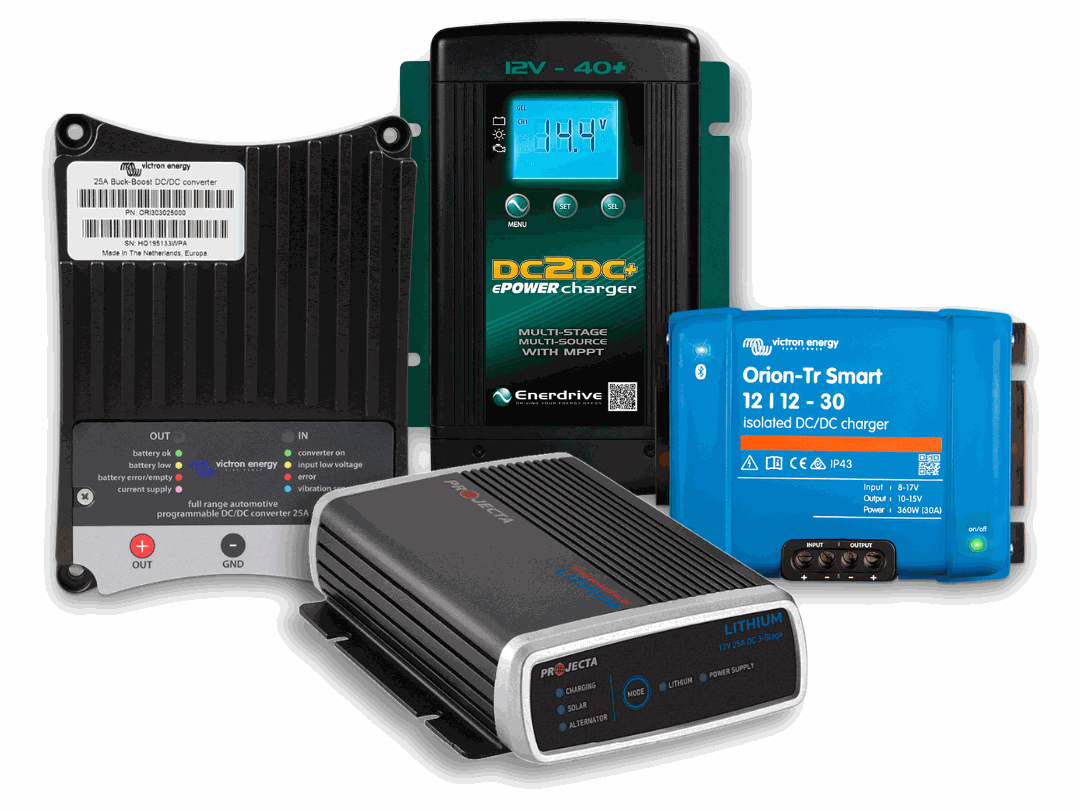
Once you know this, you will have a clear indication of which components you’ll need in your system, especially if you’re looking to charge your auxiliary battery while on the road or away from powered campsites.
There are several ways you can charge your auxiliary batteries, including
- Alternator Charge
- Solar Power
- Shore Power (Plugging it in. This requires you to have an inverter/charger.)
The primary way to charge batteries while off-grid is via alternator charge. Your vehicle’s alternator generates electricity to charge your vehicle battery while you're driving, allowing your car to continue to start and run. The alternator can also be used to charge the auxiliary battery in an upgraded system, but creating this connection is not always simple.
This is where one of the main components of an auxiliary power system comes into play. If you’ve been looking into components for your upgrade, you’ve surely come across the DC-DC Charger. But what is a DC-DC Charger and why is it an important component in an auxiliary battery system?
What is a DC-DC Charger?
A DC-DC Charger is a device that is designed to charge an auxiliary battery from a DC power supply. They are commonly used in 4WD, RV and Marine applications to charge the auxiliary batteries from the vehicle’s main battery while travelling. The DC-DC Charger will step up or step down the voltage to match the required output needed to charge the auxiliary battery.
This is especially important for applications where the auxiliary battery requires a different voltage to the main battery in order to fully recharge.
For example, if the alternator of the vehicle is only operating at 13.2V, but the battery requires 14.5V to charge correctly, a DC-DC charger will increase the charging voltage from the alternator and provide the required charging voltage with a multi-stage charging algorithm. This charging process is usually achieved in 3 defined steps:
Bulk:
This is where the DC-DC Charger converts the current from the alternator to charge the auxiliary battery to almost 100%.
Absorption:
This is where the Charger will level off the power and stabilise it so that the auxiliary battery doesn’t ‘overcharge’.
Float:
Finally, it will reach the Float stage when the auxiliary battery is fully charged and its optimal capacity is reached.
Simply put, the DC-DC Charger is like the brain that can teach your alternator how to charge the auxiliary battery.
In an effective auxiliary power system, the flow of energy will look (at its most basic) like this:
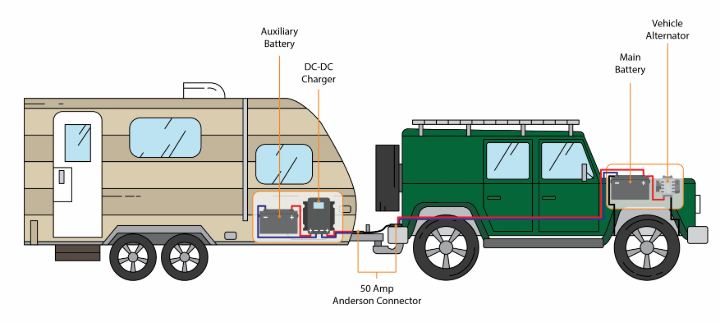
Of course, there are many more components that go into a complete auxiliary power system, and each one can be different, but this is the basis for the DC-DC Charger’s role.
What are the benefits of a DC-DC Charger?
Efficient Auxiliary Battery Charging
Most commonly, the DC-DC Charger is used to charge the auxiliary battery in a mobile off-grid system. It is specifically designed to increase the voltage of power being taken from the main battery to a voltage that is better suited to charge the auxiliary battery.
Without the DC-DC Charger, your auxiliary battery may get some power from your main battery, but will never fully charge, leaving you without access to the full potential of your auxiliary power. Doing this is also not good for the battery.
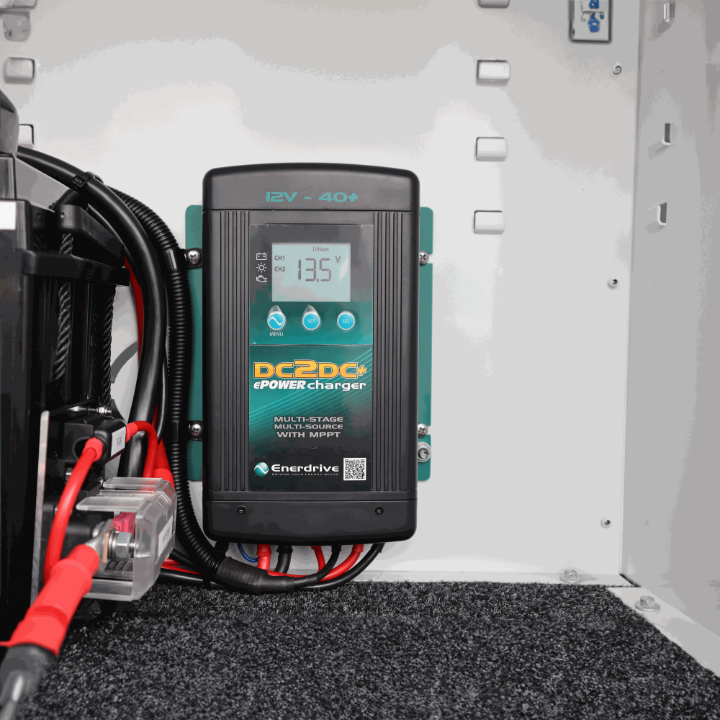
Current Limiting Device
One of the other benefits of an auxiliary power system is that it can serve as a current limiting device. This is particularly useful when the auxiliary batteries have the capability to accept a higher charge current than what the vehicle's alternator can supply.
By acting as a current limiter, the auxiliary power system ensures that the charging process remains within safe limits, preventing potential damage to the batteries or electrical system.
Increases Battery Lifespan
When a DC-DC charger is installed correctly, it has the potential to significantly extend the lifespan of your batteries. By efficiently managing the charging process, a DC-DC charger ensures that the batteries receive the appropriate voltage and current levels, preventing overcharging or undercharging.
This optimised charging helps minimise stress on the batteries, reducing the risk of premature wear and deterioration. As a result, the overall longevity and performance of the batteries can be greatly enhanced, providing you with reliable power for a longer period of time
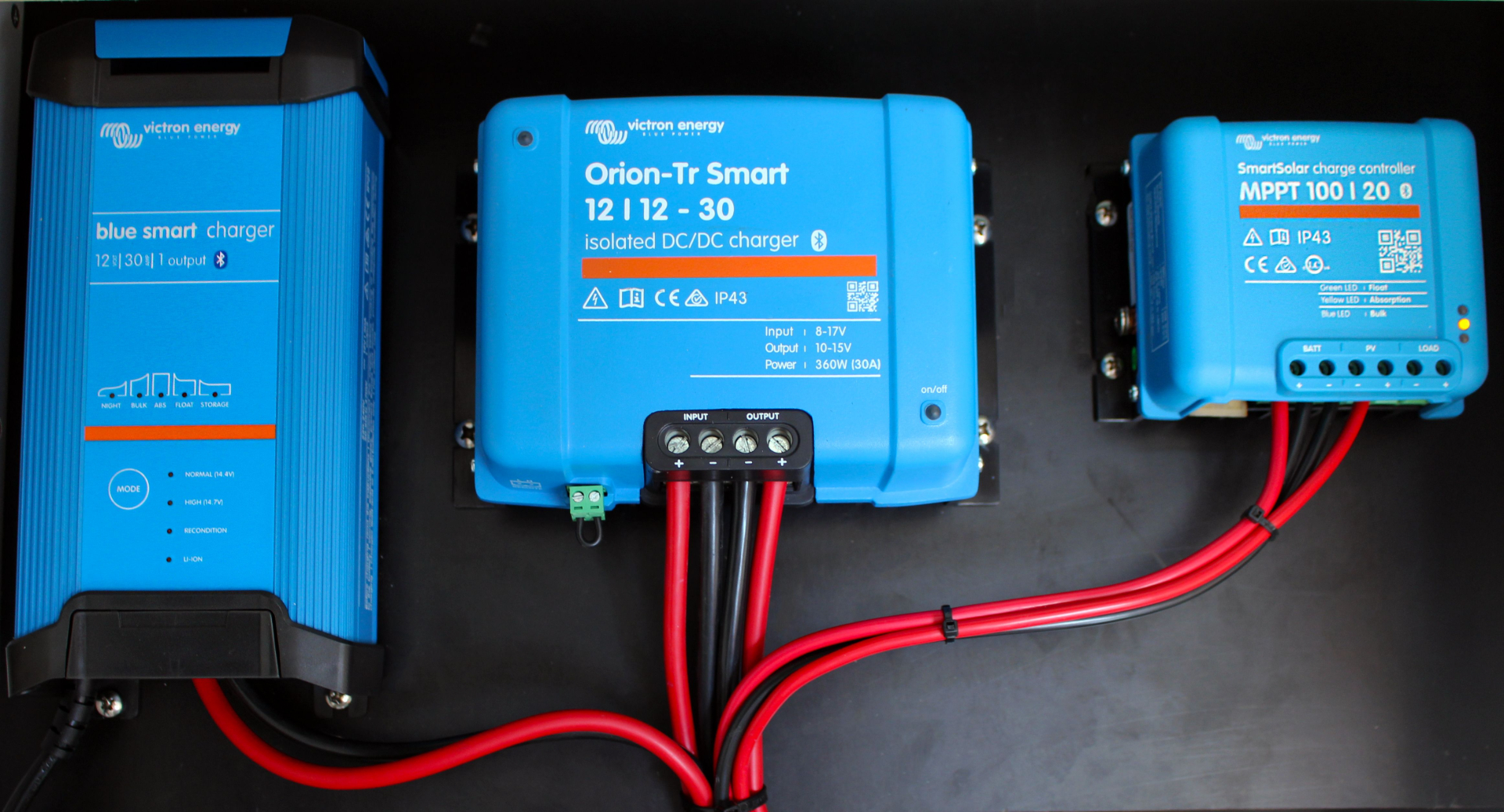
Battery Isolation
Another benefit of including a DC-DC Charger in your system is that it can act as a battery isolator. It will prevent the auxiliary battery from drawing power from the main battery when the vehicle is turned off. This ensures that the main battery doesn't get drained, meaning you’ll still be able to start your car when you need to head off to your next destination
Having this function included in one tidy component is perfect for 4WD canopy systems or smaller vans where space is limited.
Features of a DC-DC Charger
MPPT Solar Regulator
Typically, when adding solar panels into your auxiliary battery system, you will need to include an MPPT (Maximum Power Point Tracking) solar regulator/controller. The MPPT Controller tracks the solar panel's maximum power point and adjusts the current flowing from the panel to the battery, ensuring that the panel is operating at its most efficient point. This can result in a higher charging efficiency and a longer battery life.
However, more and more DC-DC Chargers these days are including built-in MPPT regulators. While these comprehensive units are still a pricier option, they are ideal for compact systems, such as 4WD canopies or caravans with limited space.
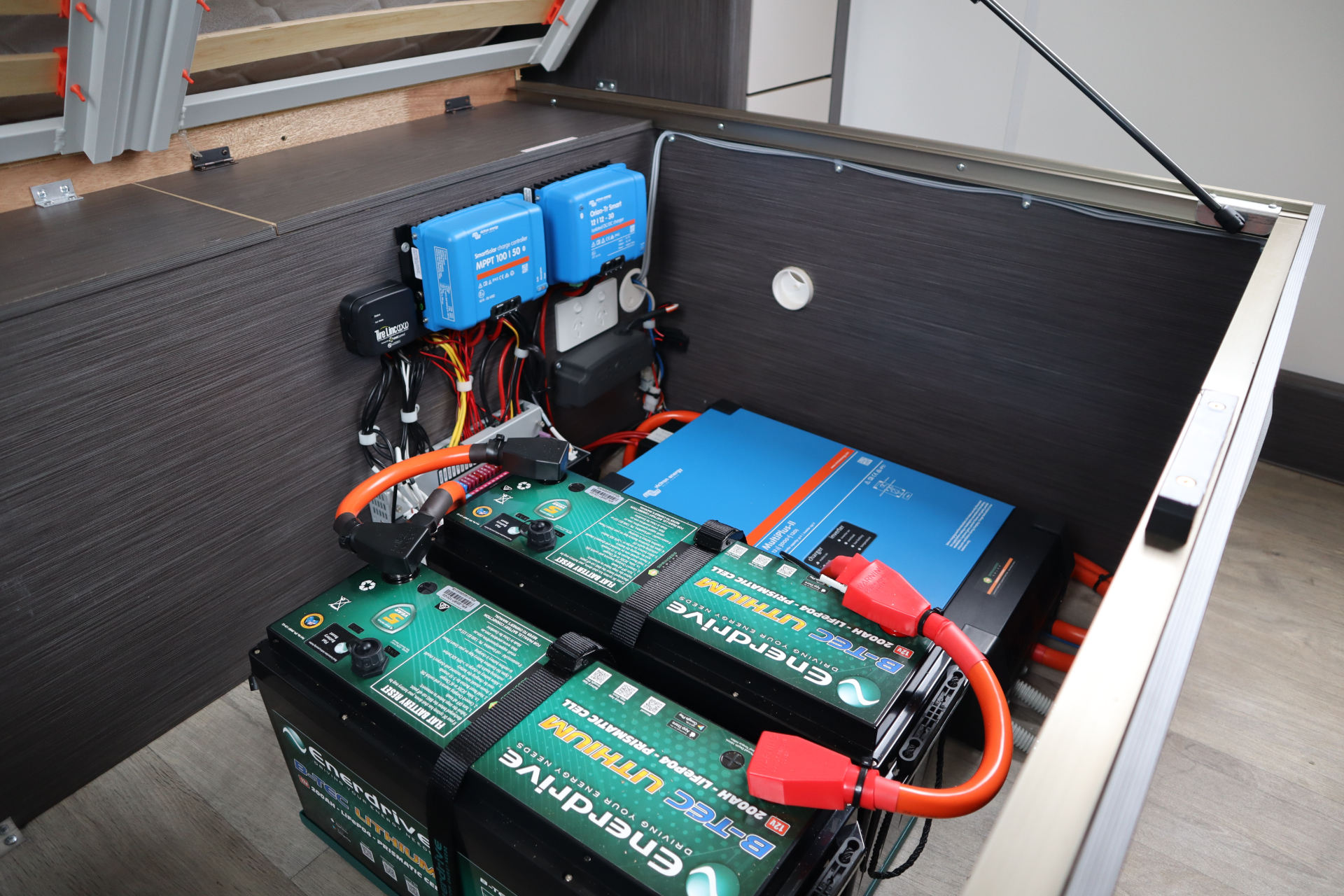
Ignition Control
Ignition control in DC-DC chargers refers to a feature that enables the charger to detect the ignition status of the vehicle and adjust its charging behaviour accordingly. The purpose of this feature is to prevent excessive power drain on the vehicle's main battery when the engine is turned off.
This is an important feature for vehicles with Variable Voltage Alternators due to the very low input voltage provided, which can sometimes cause the DC-DC charger to think the vehicle is turned off. Having a DC-DC charger with the ignition control input will allow this issue to be rectified.
Ignition control in DC-DC chargers works in the following way:
Ignition Sensing:
DC-DC chargers equipped with ignition control have a mechanism to sense the ignition status of the vehicle. This can be done through various methods, such as monitoring the voltage on the ignition wire or using a signal from the vehicle's electrical system.
Charging Behaviour:
When the vehicle's ignition is on and the engine is running, the DC-DC charger detects this and operates in its normal charging mode. It provides power to the auxiliary battery, ensuring it receives a regulated and optimised charge.
Power Isolation:
When the ignition is turned off, the DC-DC charger detects this change and enters a power isolation mode. In this mode, the charger disconnects the auxiliary battery from the main battery and prevents any power flow between them.
Battery Protection:
The power isolation mode serves to protect the main battery from excessive drain by the auxiliary battery. It ensures that the main battery retains sufficient power to start the vehicle when needed, while preventing the auxiliary battery from depleting the main battery's charge.
Reconnection:
When the ignition is turned back on, the DC-DC charger detects this and reconnects the auxiliary battery to the main battery, allowing charging to resume. This ensures that the auxiliary battery remains charged and ready for use during vehicle operation.
Ignition control in DC-DC chargers is a valuable feature for maintaining proper battery management and preserving the functionality of the main battery. It helps prevent situations where the auxiliary battery inadvertently drains the main battery, which can lead to starting issues or stranded vehicles.
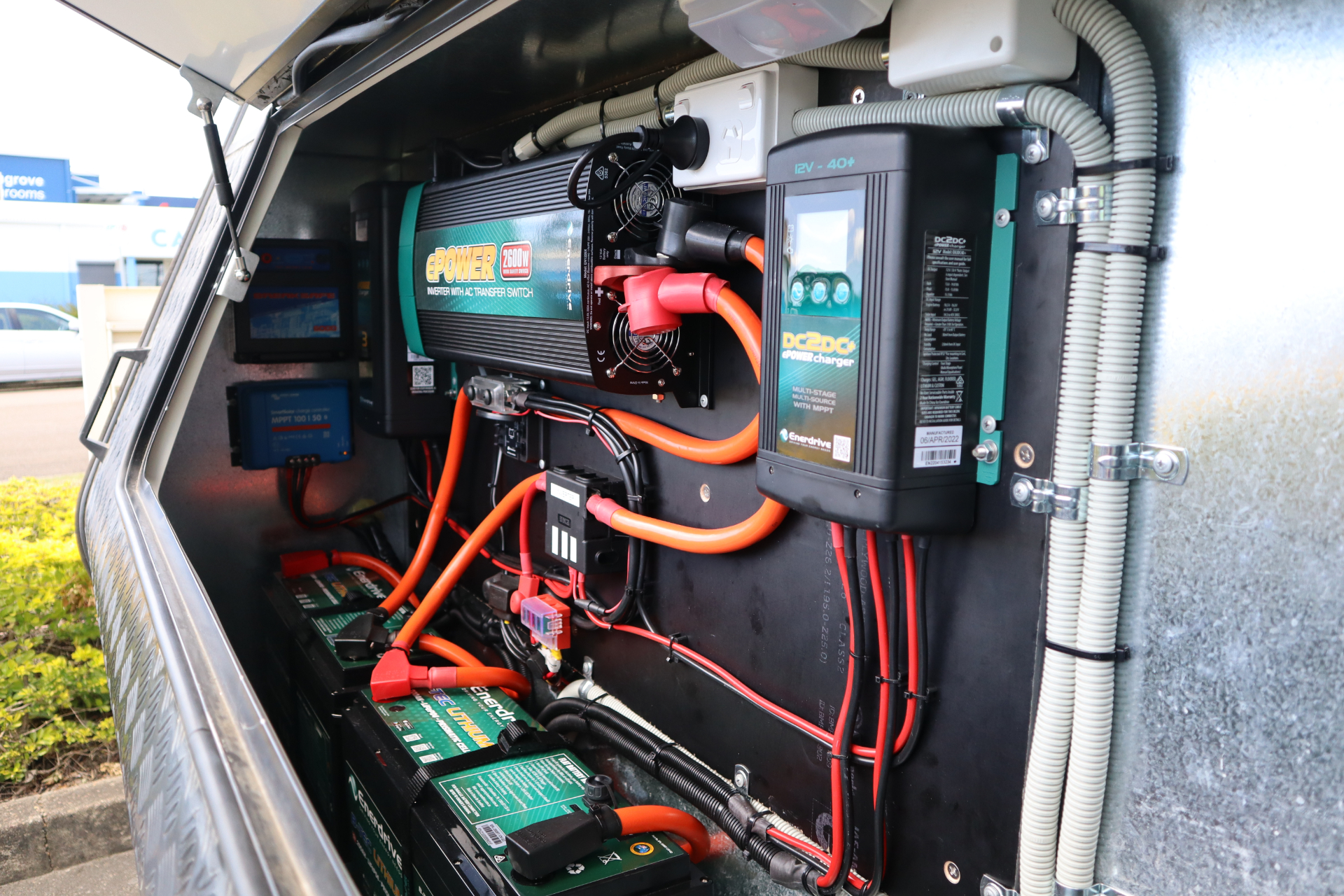
Programmability and Battery Chemistry
Most DC-DC chargers will at least have the ability to suit multiple battery chemistries, the two main types being Lead Acid (AGM/GEL) and LiFePO4 (Lithium). The suitability will be programmed into the DC-DC charge to ensure it operates optimally for your auxiliary battery type.
Sometimes, this programming is done through a basic wire connection, however, more advanced models of DC-DC chargers can be programmed via built-in display or even via Bluetooth apps or computer programs.
When you should include a DC-DC Charger in your off-grid system
Most modern cars now have an ECU (electronic control unit) alternator which is designed to reduce emissions by reducing the output voltage and current when the vehicle is running. These alternators aren't designed to charge multiple batteries at once, they are only there to recharge your main battery so the next time you use your car, there is enough charge to start it. This makes charging auxiliary batteries directly from the alternator via the start/main battery very difficult and often yields poor charging results.
Utilising a DC-DC Charger in your system will provide the auxiliary battery with the required charging voltage using a multi-stage charging algorithm. This system ensures you get the most out of your batteries.
DC-DC Charger Recommendations
There are many DC-DC Chargers available on the market, each with varying features and unique capabilities. Some DC-DC Chargers can provide more than just the DC to DC voltage conversion. Here are some of the DC-DC Chargers that we recommend:
Victron Orion-TR Smart DC-DC Charger
The Orion-Tr Smart DC-DC Charger is a professional DC to DC adaptive 3-stage charger with built-in Bluetooth. For use in dual battery systems in vehicles or on boats where the (smart) alternator and the main battery are used to charge the auxiliary battery. It can be used in 12V or 24V systems and is suitable for both lead acid and lithium batteries. Models are available up to 400W and unlimited multiple units can be connected in parallel to increase output power.
The unit can be monitored and programmed via Bluetooth, using the VictronConnect app, and can be remotely controlled via a remote on/off switch. It has built-in engine shutdown detection which allows the charger to be set to only provide power when the engine is running. Suitable for high temperatures up to 55°C with a full rated output up to 40°C.
Enerdrive EN3DC40+ DC-DC Charger
The Enerdrive ePOWER DC2DC+ Battery Charger is a fully automatic multistage, multi-input battery charger with the ability to charge from either an alternator linked to a battery; or via solar power with the in built Maximum Power Point Tracking (MPPT) Solar Controller. With two inputs available, the main/house battery will be charged from either the engine while underway, or via the solar panels when stationary.
The ePOWER DC2DC+ Battery Charger is a fully automatic, set and forget charger. It is designed to quickly and accurately recharge your deep cycle batteries using multi-stage charger algorithms, enabling the charger to be connected to your battery bank permanently. It will regulate its output based on the loads connected to your battery bank, which is important to maintain the life of your battery bank. The ePOWER DC2DC+ Battery Charger has two methods of load based regulation to ensure your battery charger transitions to float when it should do so.
Victron Buck Boost
The Buck-Boost DC-DC Converter is a DC to DC converter designed to charge a 12/24V service battery in vehicles with an intelligent dynamo. A DC-DC Converter is essential to charging the service battery properly in a intelligent dynamo vehicle as when the engine is running, these dynamos (powered by the on-board electronics of Euro 5 and 6 engines) do not always emit the correct charging current.
The converter will charge the auxiliary battery with a pre-set charge voltage, eliminating high and low voltages. Deep discharge of the vehicle's starting battery is avoided by a built-in ‘engine running’ detection system. Instead of this detection system, the converter can also be activated by means of a programmable input. The converter can be fully programmed by means of a simple and user-friendly PC application and can be programmed to charge a 12V or a 24V auxiliary battery from either a 12V or a 24V alternator and starter battery.
In Summary
In summary, when looking to install an auxiliary power system in your 4WD or motorhome, investing in a good quality DC-DC Charger is definitely worth it. By allowing you to effectively charge your auxiliary battery, you can ensure your system keeps your off-grid adventures going for much longer.
To see how we use DC-DC Chargers in our Springers Workshop installations, check out the videos below:
Enerdrive EN3DC40+ DC-DC Charger:
OFF-GRID CARAVAN: Running Aircon + More With 600Ah Lithium & Solar! (Includes Cerbo GX 70 Tutorial)
How It's Possible To Stay OFF-GRID With 12V LITHIUM Power - It's Simpler Than You Think!
Victron Orion-TR Smart DC-DC Charger:
890W Solar & 600Ah Lithium Storage - Off-Grid Caravan with Air Con
Off-Grid Caravan - Solar & Lithium Battery System
Springers Solar | Your Trusted 12V/24V Components & Accessories Supplier
We only stock the best brands in the extra-low voltage industry for the best prices - you can trust that when you buy gear from Springers, you are setting up your system to perform long-term. We don't waste your time or our time with low-quality products.
With an in-house team of 12V/24V experts, we can offer advice and support as you set up your off-grid, off-road, or DIY battery system. We are Queensland-based and house our stock, so check out our online store here or visit us at Lawnton or Capalaba for in-store help.
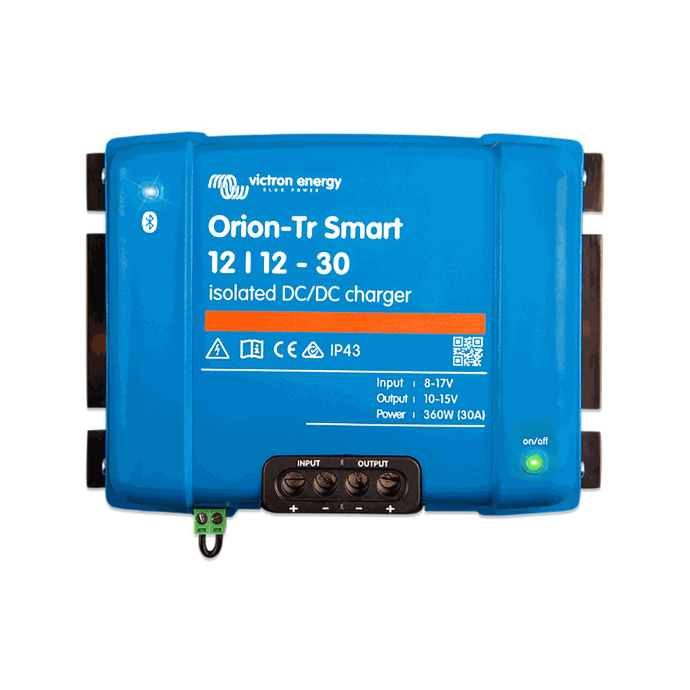
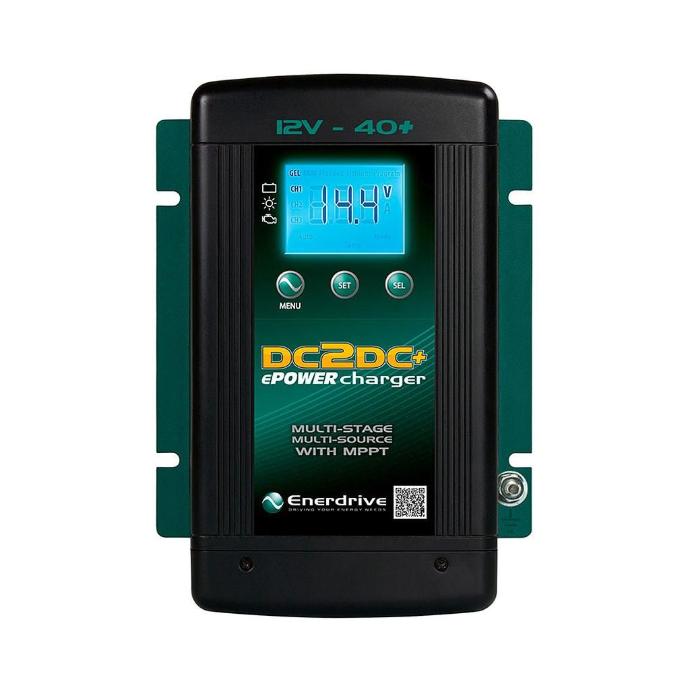
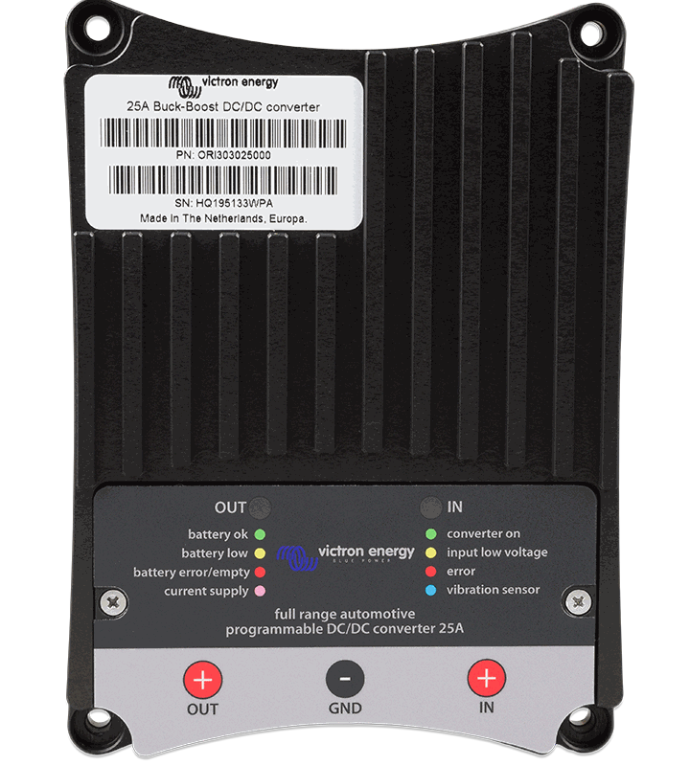
DC-DC Chargers